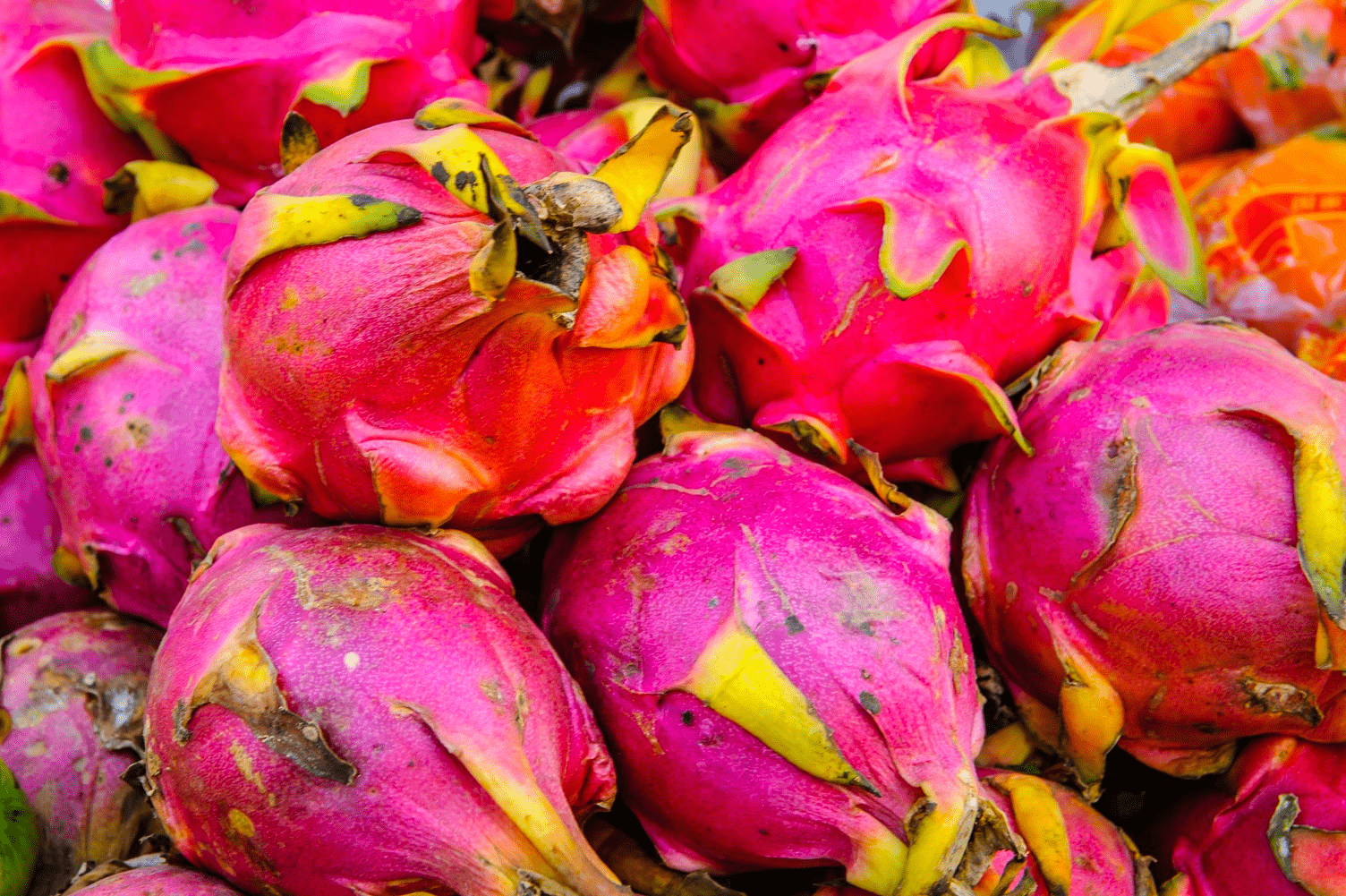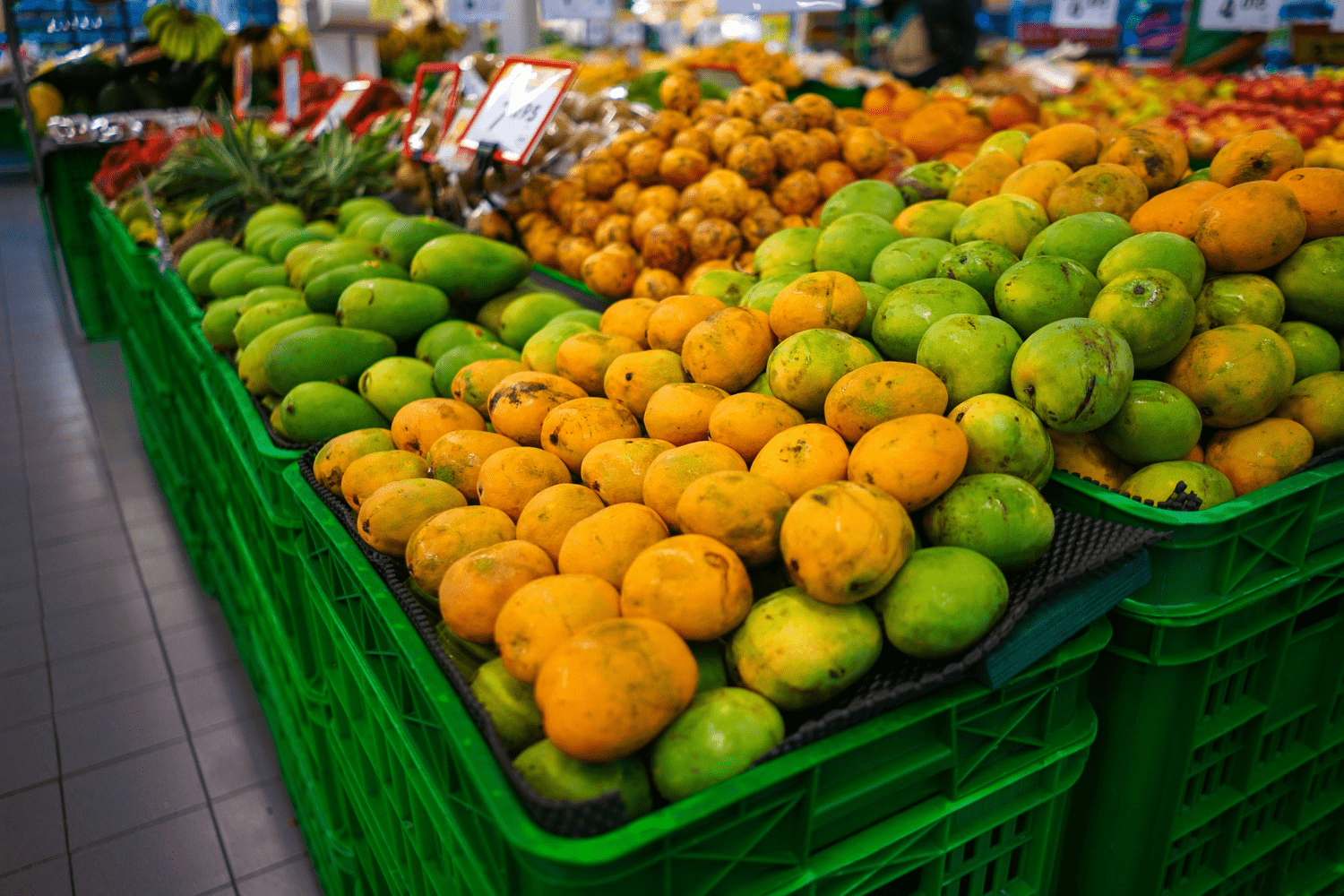Lychee
Currently, the price of domestic lychee is quite high compared to the price in previous years. At the start of the season, the price of lychee ranges from VND 30,000 to 40,000 kilo but up to now, the normal type is about VND 20,000-25,000 per kilo and the premium type is about VND 25,000-30,000 kilo; the price peaks at VND 35,000 per kilo, according to the people growing lychee in Bac Giang.
Vietnamese lychee is rated as the best lychee in the world. Every year, Vietnam has more than 50% of total lychees production exported to nearly 30 countries and territories worldwide. Lychees are grown mainly in some northern provinces, especially Bac Giang, which is considered as the “capital of lychee” of Vietnam.
In 2015, in addition to traditional markets such as China and ASEAN countries, Vietnamese lychees were exported to the US and Australia for the first time. By the beginning of 2020, after a long negotiation process, Vietnamese lychees have finally been accepted to export to Japan and Singapore.
As converting production methods towards improving the quality of lychee to meet export standards, the value obtained by selling lychees has increased several times.
In Japan, Vietnamese lychees are packed in a small box of 200gr and sold at prices spanning from VND 350,000-500,000 per kilo, which is 10 times higher than the price in the domestic market. According to Mr. Vu Hong Nam, Ambassador Extraordinary and Plenipotentiary of Vietnam to Japan, it is difficult to grow lychees in Japan because it is a temperate country. The production of lychees grown here only accounts for 5% of the market share in Japan, so the lychee is considered a high-end product and sold at a very high price.

In Singapore, the price of lychee this year is higher than that last year. The promotional price is VND 105,000 per kilo and it is expected to increase to VND 120,000 per kilo in the following weeks. The lychee is canned and sold in all 230 FairPrice supermarkets – the retail group owing 70% market share in Singapore, greatly expanding the scale compared to last year. It is expected that by the end of July 2021, the volume of lychees exported to Singapore can be up to 100 tons as this country consumes at least one 40-feet container of lychees.
The price of lychee fluctuates within a certain range depending on which EU country lychees are sold in. In France, wholesale price of lychee ranges from €2.5-3 per kilo and €4-5 per kilo when retailing. Meanwhile, in the UK market, lychee is packed in bags or boxes of 300-400gr, with an average price of £5-7 per kilo. In addition to fresh lychees, it is also processed into a variety of dishes, such as the added ingredients in Halibut with cashews, the lychee served with miso salad, or added to taste in an oyster salad mixed with coconut pulp.
Dragon fruit
In Asia, Vietnam ranks first in dragon fruit production with about 50 hectares of planting area, of which, white-fleshed accounts for 95% of production and red-fleshed accounts for about 4.5%.
Dragon fruit is a traditional product for Asian consumers in general and Vietnamese ones in the US in particular. In the US, because the Asian community is quite large, the demand for dragon fruit here is huge too. It is known that Vietnamese dragon fruit is mainly sold in markets and supermarkets of Chinese and Vietnamese, and the price ranges from VND 130,000-180,000 per kilo sometimes.

Besides, dragon fruit is also exported regularly to Japan, accounting for a relatively large ratio of more than 1,000 tons of dragon fruits imported each year. Vietnamese dragon fruit is directly sold in Japanese supermarkets for about $10 per kilo, much higher than the price in Vietnam, which is VND 17,000-20,000 per kilo.
Durian
In the complicated epidemic situation, the output congestion causes many agricultural products to fall drastically, yet durians in the Mekong Delta are still marketable goods. The price of durians currently purchased by traders ranges from VND 60,000-80,000 per kilo, 2 times higher than that in 2020. The reason for this increase in price is that planted areas of durian are affected by soil salinity, lack of freshwater, adverse weather, low fruiting rate, so the production of durian this year is much lower.
Not only meeting domestic demand, but durian is also a popular fruit in many international markets, especially whole frozen durians, whole frozen durian arils. The price of frozen durian in China is between ¥40-45 per kilo (VND 60,000 per kilo), in the US it is about $11-15 per kilo (VND 253,000-345,000 per kilo) and in Australia approximately AUD 15 per kilo ($10.2 per kilo).

China is Vietnam’s largest durian export market, however, mainly through border trade, so it has not exploited its potential and advantages well. Currently, Vietnam is trying to negotiate to be able to export durian officially to China with the desire to create opportunities for Vietnamese durian to become known.
Meanwhile, in the Australian market. frozen durians are still overwhelming due to being able to be stored for a long time and carried easily. According to the study, frozen durian can even completely replace fresh durian.
Mango
At the start of the season, many fruits simultaneously increased in price, only mangoes went against this trend when the purchase price decreased by more than half, which is about VND 3,000-8,000 per kilo. A trader in Long An province said that he was buying mangoes at the price of VND 4,000-5,000 per kilo, Cat Chu mangoes at the price of VND 9,000-12,000 per kilo, Taiwan mangoes at price of VND 12,000-14,000 per kilo, and Hoa Loc mangoes at VND 15,000-17,000 per kilo.
However, the price of mangoes in supermarkets and agricultural markets remains high. Specifically, at supermarkets, Cat Chu mango costs VND 24,000 per kg, yellow-skin mango cost VND 29,000 per kilo, Tu Quy mango costs VND 35,000 per kilo, Thai mango costs 37,000 per kilo, Hoa Loc mango costs VND 53,000 per kilo, etc.
In the first quarter of 2021, the situation seemed to reverse when other fruits all saw a decline in export value, but it is estimated that the export value of mango increased by 16.5% over the same period last year.
Since 2019, mango has become the sixth Vietnamese fruit licensed to enter the US market. The average export price is high, reaching $2.2 per kilo, up 2.5% compared to 2019, much higher than the average price of mangoes imported into the US in 2020 ($1.26 per ton).

Demand for mango in the US is predicted to double in the next 10 years, especially organic mango. Americans love Vietnamese mangoes due to their quality and deliciousness. They are willing to buy it at a higher price than mangoes imported from other countries. This creates many opportunities for Vietnamese businesses to expand their market share in this market.
Nevertheless, the biggest challenge when exporting mangoes to the US is competition with its neighboring countries. Disadvantaged by having to transport far away, so Vietnamese mango exporters need to invest more in preservation as well as the form to ensure freshness when brought into the US.
In addition, according to statistics in 2020, Vietnamese mangoes also make its mark in the Korean market by becoming the 4th largest mango supplier of the country (accounting for 6.2% of the total import volume of mangoes). According to Gmarket, the price of green-skin mango ranges from 10-20 won per kilo, the price of KingMango ripe mango is about 10 won per kilo.
The first batch of Cat Chu mangoes was exported to Japan at the end of 2015. At retail supermarkets in Japan, Cat Chu mango costs about $8-10 per kilo (VND 200,000-300,000 per kilo). However, in contrast to the US and South Korea, mango consumption in Japan tends to decrease due to the inable competition with others. The mango wilt ripens quickly and is easily damaged because the storage technology is not good, moreover, the shipping cost also causes the increase in price.
In general, this is a good signal for Vietnamese fruits to be sold in the most challenging markets in the world like the US, Japan, Europe, etc. This not only helps to expand the scale of consumption but also be an affirmation of the quality and prestige of the agricultural products of our country. Vietnamese fruits have now established a foothold in the international market and hopefully in the future, we will witness more achievement of Vietnamese agricultural products.
Minh Ngo, Dinh Tung













